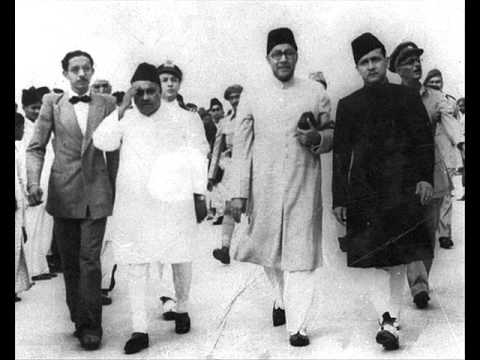Post Partition Pakistan #16 Historical Developments 1950-1955
Pakistan's Political History (1950-1955): Challenges of Nation-Building and Constitutional Progress
The period from 1950 to 1955 in Pakistan’s political history was marked by significant developments as the country grappled with the challenges of nation-building, the drafting of its constitution, and the consolidation of its identity as an independent state. This article explores key events, constitutional progress, political dynamics, social changes, religious issues, and economic developments during this formative period.
1950:
- Objective Resolution Adopted (March 12, 1949): The Objective Resolution, emphasizing Islamic principles as the guiding force for Pakistan’s constitution, had been passed in 1949. In 1950, it became a preamble to Pakistan’s constitution, setting the tone for the nation’s future governance.
- First Census of Pakistan: Pakistan conducted its first national census in 1951, providing critical demographic data and insights for policymaking.
1951:
- First Five-Year Plan (1951-1956): Pakistan initiated its first Five-Year Plan in 1951, focusing on economic development, industrialization, and infrastructure improvement.
1953:
- Liaquat-Nehru Pact Revoked: The Liaquat-Nehru Pact, which aimed to protect the rights of religious minorities in both India and Pakistan, was revoked in 1953 due to rising tensions.
- Anti-Ahmadi Riots (March 1953): Violent riots erupted in Lahore, primarily targeting the Ahmadiyya community. These events raised questions about the status of religious minorities in Pakistan.
1954:
- One Unit Scheme Abolished (July 1955): The One Unit Scheme, which had merged the provinces of West Pakistan into a single administrative unit in 1954, was abolished in response to demands for greater provincial autonomy.
- Bogra Formula (October 1953): The Bogra Formula proposed a parliamentary system for Pakistan with significant powers for the central government, serving as an interim constitutional arrangement.
1955:
- First Constituent Assembly Dissolved (March 1955): The first Constituent Assembly of Pakistan was dissolved, and elections were held to form a new Constituent Assembly. This marked a significant step in the constitutional process.
- Second Constituent Assembly (July 1955): The second Constituent Assembly was convened, tasked with drafting a new constitution for Pakistan.
Constitutional Developments:
During this period, Pakistan progressed in its efforts to draft a constitution. The Objective Resolution became the preamble to the constitution in 1950. The Bogra Formula and the convening of the second Constituent Assembly in 1955 were significant steps toward constitutional development.
Political Movements:
Political dynamics were characterized by debates over the nature of Pakistan’s constitution, including the distribution of powers between the central and provincial governments. The One Unit Scheme was abolished in response to demands for provincial autonomy.
Social and Religious Developments:
The period saw social changes, including the conduct of the first national census and the emergence of debates regarding the rights of religious minorities, as evidenced by the anti-Ahmadi riots.
Economic Progress:
Pakistan initiated its first Five-Year Plan in 1951, focusing on economic development and modernization. This plan marked an important step in addressing the country’s economic challenges.
Leadership and Key Figures:
During the period from 1950 to 1955 in Pakistan’s political history, there were several key leaders who held significant positions of power. These leaders played vital roles in shaping the country’s political landscape and addressing the challenges of nation-building and constitutional progress. Here are some of the prominent leaders during this period:
- Khwaja Nazimuddin (1951-1953): Khwaja Nazimuddin served as Pakistan’s second Prime Minister, taking office in 1951 after the assassination of Liaquat Ali Khan. His tenure witnessed political and constitutional developments, including the revocation of the Liaquat-Nehru Pact and the adoption of the Bogra Formula.
- Ismail Ibrahim Chundrigar (1957): Ismail Ibrahim Chundrigar briefly served as Pakistan’s Prime Minister in 1957. His tenure was short-lived but marked a transitional period in Pakistan’s political leadership.
- Sir Malik Feroz Khan Noon (1957-1958): Malik Feroz Khan Noon became Pakistan’s Prime Minister in 1957, leading the country during a critical juncture that ultimately led to the imposition of martial law by General Ayub Khan in 1958.
- General Iskander Mirza (1956-1958): Iskander Mirza served as Pakistan’s first President after the country adopted its first constitution in 1956. He played a role in the political developments that led to the imposition of martial law in 1958.
- Sir Muhammad Shah Nawaz (1951-1953): Sir Muhammad Shah Nawaz held the position of Governor-General of Pakistan during Khwaja Nazimuddin’s premiership.
- Maulvi Tamizuddin Khan: Maulvi Tamizuddin Khan was the Speaker of Pakistan’s Constituent Assembly and played a crucial role in constitutional matters during this period.
These leaders were instrumental in addressing the political, constitutional, and economic challenges that Pakistan faced in the early years of its existence as an independent nation. Their leadership decisions and policies had a significant impact on the country’s development and direction during this formative period
Conclusion:
The period from 1950 to 1955 was a crucial phase in Pakistan’s political history, marked by constitutional progress, economic development, and debates over the country’s governance structure. The adoption of the Objective Resolution, the dissolution of the first Constituent Assembly, and the convening of the second Constituent Assembly were significant milestones. Political dynamics revolved around the distribution of powers between the central and provincial governments, leading to the abolition of the One Unit Scheme. However, challenges related to religious and social issues, including the anti-Ahmadi riots, underscored the complexities of building a diverse and pluralistic nation. These developments laid the groundwork for Pakistan’s future as it continued to shape its political and constitutional identity.

